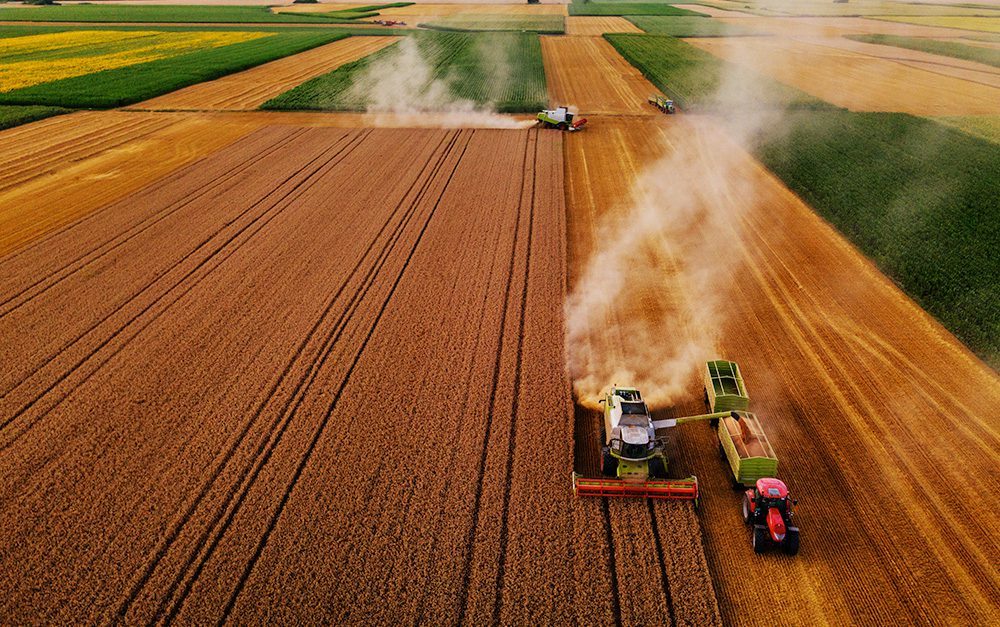Introduction
If you don’t already know, all food needs to be grown, processed, transported, distributed, and prepared before we consume it. Then often leftovers have to be disposed of. What often slips people’s minds is that all these things produce greenhouse gasses and require water. Approximately one-third of all human-caused greenhouse gas emissions are linked to food. It makes sense why environmentally friendly eating is difficult. Who’s going to measure the amount of greenhouse gas emissions it takes to keep a single Gatorade cold? Can we track how far the truck travels? How about the energy it takes a factory to produce some monopotassium phosphate? Luckily, refrigeration, transportation, and production of packaging account for a smaller percentage of greenhouse gas emissions. That’s not to say they should be ignored but we should prioritize agriculture and land use because that’s where the largest amount of greenhouse gas emissions and water usage come from.
It’s reported that a vegan diet can help the environment but is it that simple? The short answer is absolutely not. In this article, I will compare the environmental impacts of a traditional cheeseburger and a vegan cheeseburger by main ingredients. Seeing the impacts side by side can convey which diet is more environmentally friendly however you might be surprised by the results.
The Common Ingredients: bread, lettuce, tomato, and onion.
Bread is going to be the most processed ingredient out of this group and it is worth noting that more processed foods are generally going to need more water. However, the UN reported on the greenhouse gas emission intensity of common foods and that data shows that bread is going to be on the low side of the spectrum. When looking at kilograms of greenhouse gas emissions per kilogram of food, bread will produce 1.6 kg. In comparison, the highest food, beef, produces 70.6 kg.
Lettuce, tomatoes, and onions can be even better than bread since they are whole foods that can be grown locally. Local produce requires less gas for transportation however whether produce is local also depends on the season. Onions are going to fare the best because after they are harvested they can be stored during the winter. This means that onions can be acquired locally year-round. Unfortunately that won’t be the case for lettuce and tomato. They won’t grow here during the winter, therefore they’ll have to be flown in from a warmer state such as California. The problem with air-transported produce has to do with the effect of airplanes on the environment. Aviation accounts for over 2% of global emissions. In terms of water, all three of these products have a small footprint, all less than 10 gallons per serving.
Beef
A traditional burger is going to contain beef which has a big environmental impact due to industrialized agricultural practices and land use. Mass beef production requires lots of grassland to raise cattle and this grassland is often created by deforestation. This releases carbon dioxide stored in trees into the atmosphere. Additionally, feed has to be produced for the cattle which is often fertilized by chemicals that will admit nitrous oxide. Cattle also produce methane and more nitrous oxide from waste. This all adds up to 70.6 kg of greenhouse gas emissions per kg of beef. The water footprint isn’t better. A 4 oz serving of beef requires 463 gallons of water.
What The Beef is Being Traded For
The most common types of vegan burgers mainly consist of beans, soy, or mushrooms. A bean burger is generally less processed and legumes produce 2 kg of greenhouse gas per kg of food. Beans will have a moderate water footprint with 49 gallons for 4 oz of dry beans. On the other hand, burgers made from soy have a bigger water footprint. A 4 oz soy burger requires 113 gallons of water. Additionally, the industrialized agriculture of soy leads to deforestation and fertilizer use that adds to greenhouse gas emissions. According to the World Wildlife Fund, soy is the second-largest agricultural driver of deforestation worldwide after beef, however, only 6% of soy is grown for human consumption. Mushrooms are used to make veggie burgers and since they are a whole food that can be cultivated year round you would think they are environmentally friendly. Despite that, a USDA study found that producing a kg of button, chestnut, or portabella mushrooms produces 2.1 – 3.0 kg of CO2. This is due to the energy used to keep the rooms they grow in up to 144 degrees F and the CO2 that mushrooms produce on their own. If some rice is mixed into these veggie burgers there’s 3.6 kg of greenhouse gas per kg of rice and 73 gallons of water. Rice is also estimated to account for 8% of all global methane emissions.
Sidenote
If avocado is being added to either one of these burgers it will come with 30 – 60 gallons of water per avocado. Additionally, Mexico exports the most avocados and in order for them to make it to our plates in Maryland they’ll need to take a plane.
Cheese
Finally, cheese has 23.9 kg of greenhouse gas emissions per kg and 95 gallons of water for a 4 oz serving. Overall, it’s not looking the best however you might be surprised with what vegan cheese will bring to the table. Vegan cheese is commonly made out of almonds, cashews, or soy. We know about soy’s impact but impressively, nuts produce the lowest amount of greenhouse gas, 0.4 kg. Equally impressive, almonds have the largest water footprint out of all these foods. 483 gallons for a 4 oz serving! Cashews aren’t much better at 427 gallons.
Conclusion
All this information can seem quite depressing and stressful but it’s important to remember that learning more about our food’s environmental impact will improve how we treat the planet. We shouldn’t let facts discourage us from wanting to gain more information especially if they change a pre-existing belief.







Eduardo Polón • Jan 6, 2025 at 9:22 am
Your investigative analysis provides an insightful and thorough comparison of the environmental impacts of traditional and vegan cheeseburgers, breaking down each ingredient with precision. The way you analyze the carbon footprint, water usage, and land requirements of both options is both comprehensive and accessible, making complex data easy to understand. By balancing environmental concerns with a clear, fact-based approach, you offer readers a well-rounded perspective that encourages thoughtful decision-making.